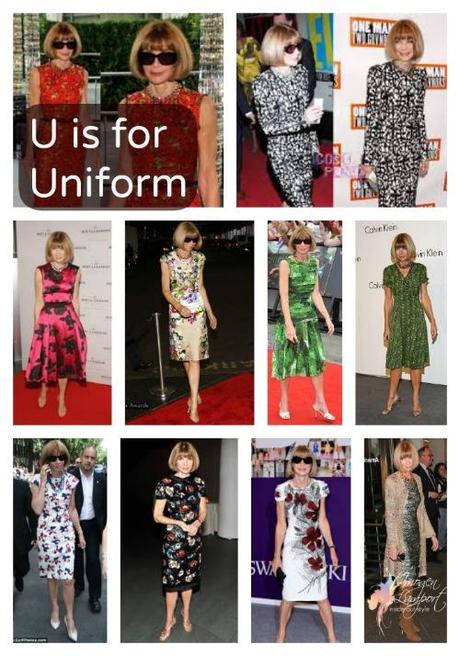
A uniform doesn’t have to be something prescribed by a workplace or school (or any other institution). It can be one that you create yourself. The concept of a uniform works for some, in fact they love it, it helps them feel in control, they know what they’re going to wear and they don’t have to think about it. For others, it gives them heart palpitations and makes them feel uncomfortable and boxed in to think about wearing such a limited range of clothes or styles of clothes.
What I’ve notice is that those that love the idea of uniform dressing and find it freeing prefer to:
- Have a smaller wardrobe
- Love wardrobe capsules
If this is you, let’s consider how you can create your uniform formula. But if it’s not, if you find the capsule too limiting as an idea, you get too bored wearing the same clothes over and over, or you really like to wear quite different looks, depending on your mood (and you are a mood dresser), then going down the uniform path won’t work as well for you (though there are some ideas you can use from this in your larger, more expansive and eclectic wardrobe).
There are some that have been considered to have great style who had a uniform – Audrey Hepburn and Jackie Onassis are two who fall into that category from the past, and Anna Wintour these days has a daily uniform of a print shift dress. Steve Jobs claimed that dressing the same every day, and eating the same breakfast every day let him be more creative in his work life, as it took away some daily decisions.
Your uniform may consist of a selection of specific:
- Colours
- Shapes of garments
- Lengths of garments
- Patterns
- Fabric fibres
- Jewellery styles or pieces
- Shoe shapes
- Other accessories
If you love the uniform concept, think about creating your own formula for putting your outfit together. You may want to look through your current wardrobe, select 5-10 favorite outfits and get them out, put them on, take a photo of yourself in them and then start analysing them.
Look for what about each of the above list is similar in them:
- are there patterns
- are they solid colours
- bright or muted colours
- shapes of outfits – straight, flared, curvy, angular
- fabrics – natural fibres or all non-iron synthetics, crinkle fabrics, smooth fabrics
- sheen or texture
- how do you accessorise them? Belts, scarves, necklaces, bangles, shoes etc.
What are the elements that you see in common with each other?
When we take Anna Wintour as an example (see pic at the top of the page) you will notice many similarities in her outfits:
- Dresses
- Straight, or fit and flare
- Pattern
- High necklines
- Necklaces that sits just over the neckline
- Bob hairstyle
- Fine fabrics, frequently some sheen
- Heels
- Sunglasses
Even though she’s wearing different dresses, there is a uniform quality to her outfits.
In some ways we all have a kind of uniform. Even though I like to have a broader variety of clothing to play with depending on my mood, I also enjoy wearing these elements:
- large scale necklaces
- asymmetry
- unusual construction
- brighter colours
- dresses or skirts rather than trousers
- comfortable stretch fabrics
- fluid fabrics
- Flat or lower heel shoes
- Boots in winter
- sheen in fabrics
- bob hairstyle
- fitted clothing (rather than boxy or loose)
What is your uniform? What are the elements of clothing that you’ve noticed that tend to repeat themselves over and over?
Are you stuck in a style rut? Maybe you hate your current uniform and need to branch out to find newer more exciting elements to add into your wardrobe and style.

